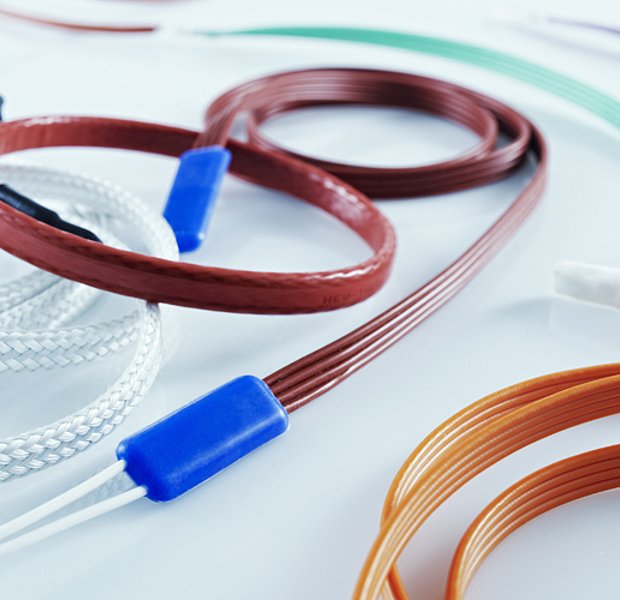
Electric band heaters
Electric band heaters serve to prevent condensation and frost damage when motors stand idle in cold environments.
Technical information on electric band heaters
General
Electric band heaters are available with a wide range of powers, heating tape lengths or supply voltages. The wide contact face guarantees excellent heat transmission and easy assembly. They are usually mounted by bandaging the heating tape on the winding head. When the motor is vacuum impregnated, the use of a glass fibre raw hose helps to ensure a better connection with the impregnation resin. Self-limiting electric band heaters and ATEX-certified electric band heaters are also produced for use in explosive areas.
Use
Electric band heaters are intended for use in electric machinery. Especially when used outdoors, e.g. in ship drives or offshore plants, they are often exposed to tough conditions. If the motor cools, the temperature can drop below the dew point. This causes air humidity to collect in the motor, forming condensation, which can ultimately lead to corrosion effects or short circuits – in turn resulting in a shorter life expectancy or even downtimes. Electric band heaters reliably keep motors or electrical machinery above the dew point and ensure reliable operation.
Operating principle
The heating conductor (resistance wire) made from CuNi or NiCr alloy is wound onto a glass fibre carrier in a spiral form. The individual wires that arise are connected in series using crimp sleeves. To protect against moisture, the crimp connections are insulated with shrinking tube and the heating lines covered with a silicone sheath. The entire heating tape is then sheathed with a glass fibre raw hose. Voltage is supplied via firmly connected PTFE single wires.